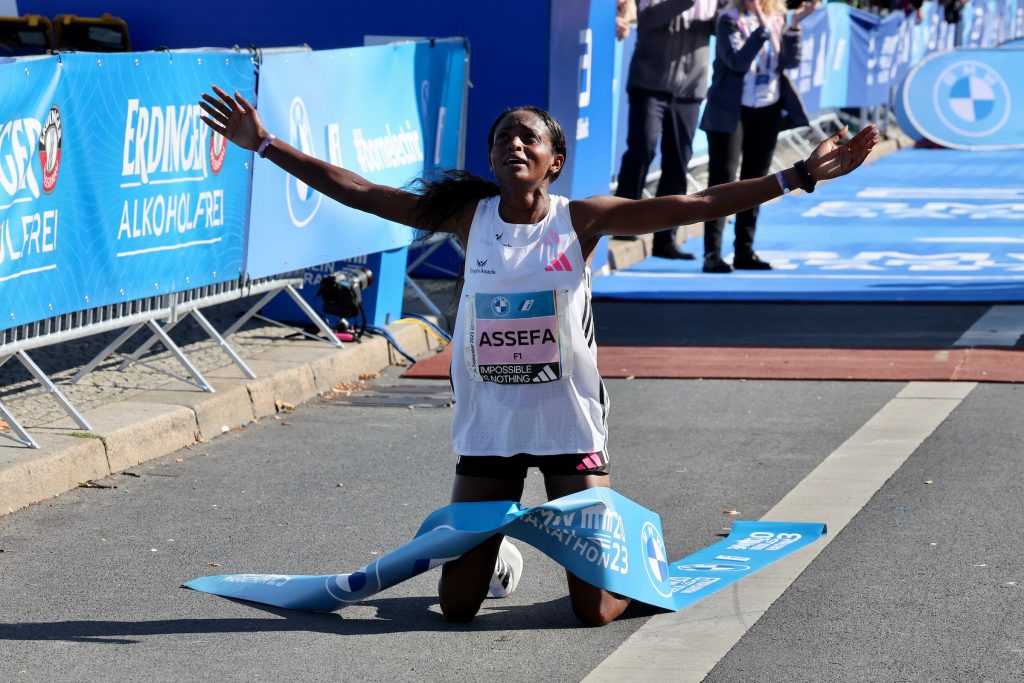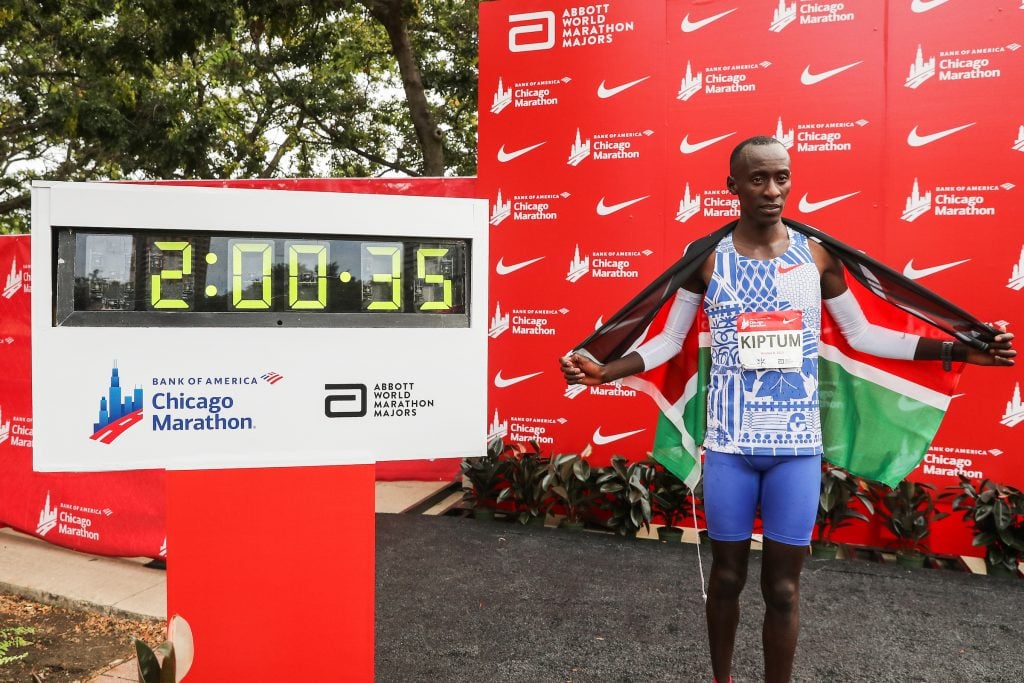Guest Editorial: The Golden Age of Running Is Coming — Ready or Not
By Stephen Lane
October 11, 2023
Sometime in the next 24 months, the marathoning world is likely to see two mind-blowing new world records, marks I did not expect to see in my lifetime: a sub-two-hour marathon for men, and a sub-2:10 for women. On the track, we may soon see a 3:39 mile and a 25-something 10,000m; several women will run the 5,000m under 14 minutes, and the first women’s sub-4:00 mile is visible on the horizon.
We’re not ready. We are entering a golden age in the sport, but we are conflicted: is it a golden age of human performance, or of engineering and pharmacology?
Can those of us who care about running—officials, coaches, athletes, members of the media, and above all, fans—get to a place where we will be able to celebrate wholeheartedly what’s about to happen?
Maybe that place no longer exists—perhaps we’ve outgrown our child-like sense of awe and wonder, and can only approach our sport with clear-eyed skepticism. But, if we can indulge our inner child for a moment, here’s how I’d help us get back there.
First, the shoes: In the weeks after Berlin, and the days after Chicago, there’s been as much talk about the shoes as the athletes. I’ve learned more about the Pro Evo 1s and the Alphafly 3 than about Tigst Assefa and Kelvin Kiptum. Yelling at clouds won’t bring back the days of Onitsuka Tigers; supershoes are here to stay. But maybe we can take a pause, and insist that the shoe companies make no changes in materials or design until the big barriers are broken. Let us get comfortable with the shoes and their impact.
The more intractable problem, of course, is doping. Consider my father’s reaction to Kiptum’s new record. He’s only a casual fan of the sport, but when we spoke after Chicago, his first question was, “Is he legit?”
Or, consider Ross Tucker’s reaction to the new women’s world record: “Your confidence in Assefa’s performance would be quite different if you knew she had provided 17 samples [for the passport] between last year in Berlin and this race, compared to if it was 3, right?”
Cynicism reigns, with good reason. If I could (still indulging the fantasies of my inner child), I’d wave a wand and turn all the PEDs coursing through various athletes’ veins to sludge—ideally when they’re at the mid-point of a 20-mile out-and-back run.
Turning back to the real world, in which I have no way of addressing the supershoes issue or the doping problem, I’m left hoping the leadership of World Athletics understands the magnitude of what’s about to happen. Their actions in the next year will go a long way toward
determining our collective response to the coming records.
WA might have a year to get out front of this—with the Olympics next August, athletes may narrow their focus to preparing for Paris, and won’t risk chasing times until after the Games. One hopes Coe and co. will use that time wisely.
If anyone can gather comprehensive data on the shoes, it’s WA. Fund a massive study—several, in fact—on all brands of supershoes, and be transparent with the results. Early studies suggest that individual results vary, from shoe to shoe; we need more data. And enforce a moratorium on further technological developments for the next three to five years. The more we know now, and the less that changes with each iteration of shoe, the more we can talk about the races and runners.
Speaking of which, what about doping? WA cannot fully alleviate the corrosive doubt that accompanies every great running performance, but it can do more. Join forces with the IOC and the World Marathon Majors to give WADA a blank check: better tests, more labs in places they
need to be, stricter out-of-competition requirements, and targeted testing of those most likely to break the records.
This will mean more tests in Kenya and Ethiopia; officials in those countries will cry foul. Rightly so. The roots of the doping problem lie elsewhere—the Soviet Bloc systematized doping; in trying to keep up, the U.S. and other federations ignored it, and may well have helped their athletes evade detection. Officials in World Athletics and the IOC seemed to favor great performances and spectacle over clean competition.
The problem is that the significant barriers are likely to be broken soon. The record-holders will write their names in history. Additional doping scrutiny, invasive as it will be, is the price these great athletes will pay for the sport’s past failings. That’s unfair, but necessary. To the extent possible, the new records need to be beyond reproach, because they will be bigger than any athlete.
Records are not just individual achievements, but human achievements—inspiration for us all, evidence that we can continue to push back the limits of human potential. The coming chase for sub-2:00 and sub-2:10 will be the biggest story in track & field over the next two years.
It’s more than that. The breaking of these barriers will capture the imagination of runners and non-runners alike. We will have new license to dream, to think differently about what’s possible. If we are ready.
Stephen Lane is the author of the recently released Long Run to Glory: The Story of the Greatest Marathon in Olympic History and the Women Who Made It Happen, and is the meet director for the Adrian Martinez Classic.








